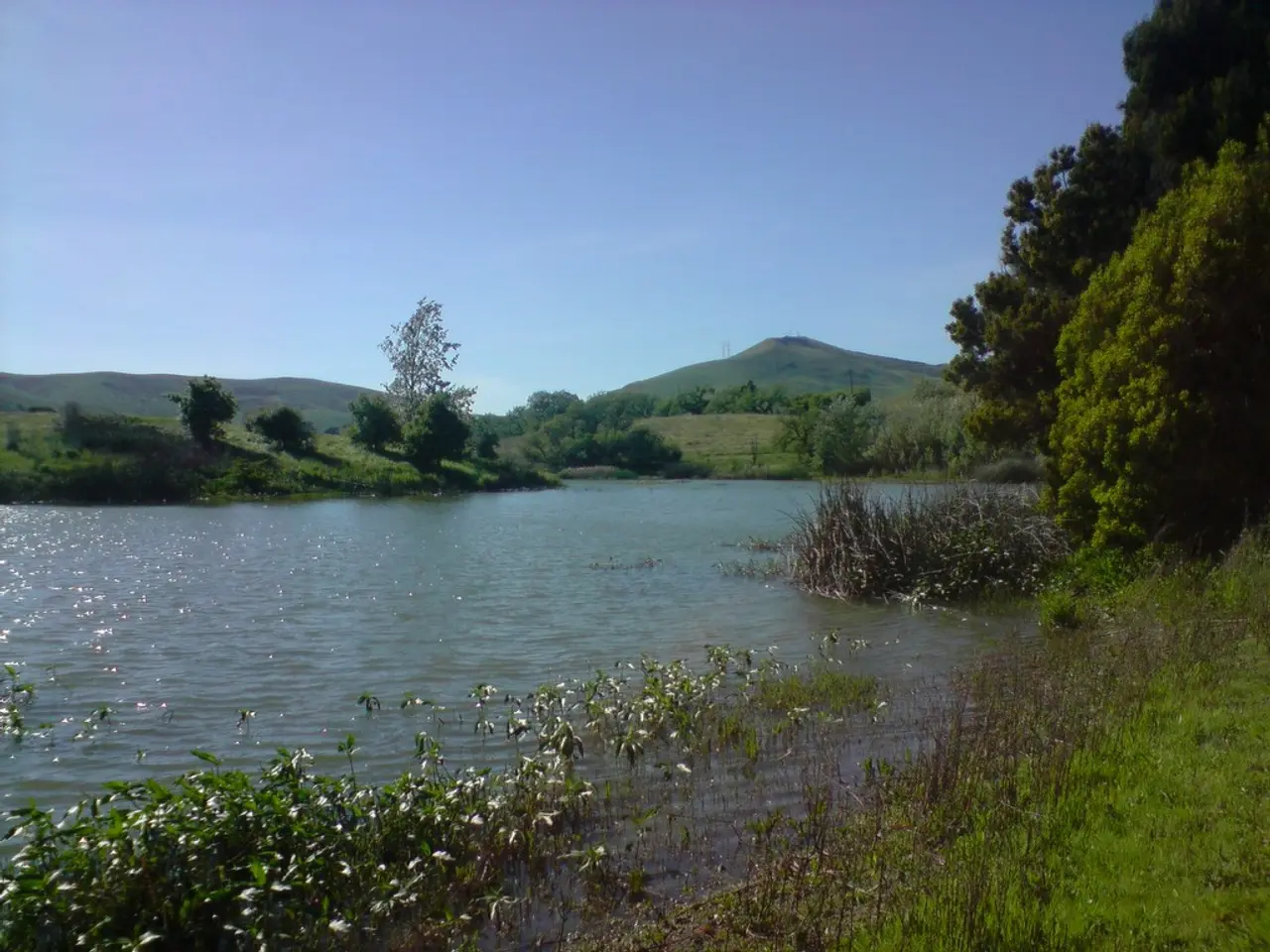Ancient Water Mills of Hama: Ancient Water Wheels from the Ottoman Era found along the Orontes River
In the heart of western Syria, nestled along the banks of the Orontes River, lies the city of Hama. Known for its historic norias, these large wooden water wheels have played a significant role in the city's development and cultural identity.
The origins of these waterwheels are a subject of debate among historians. Some trace them back to the Aramean period around 1000 BCE, while others believe they emerged during the Hellenistic era in the 2nd century BCE. However, the earliest surviving artistic representation of a noria can be found in a 5th-century mosaic from nearby Apamea, now housed in the National Museum of Damascus.
During the Ottoman period, these norias reached their peak development, receiving significant attention and becoming a symbol of the city. The Muhammadiya Noria, dating back to the Mamluk period in 1361 AD, and the Mamuriya Noria, built in the early Ottoman era in 1453 AD, are two prominent examples. Both are still operational today, standing tall as reminders of Hama's rich history.
The norias were essential for irrigation and urban development in the semi-arid region surrounding Hama. They provided a continuous and efficient method of water distribution, enabling agriculture and urban growth. The city's reliance on waterwheels was so profound that it could not have developed without them.
Culturally, the norias symbolize Hama's identity and water heritage. They are celebrated as examples of pre-industrial engineering and have become a tourist attraction, emblematic of the city's historical relationship with the Orontes River. Hama, with its long and layered history, from the kingdom of Hamath in the 11th century BCE to various ruling empires, including the Assyrian, Persian, Hellenistic, Byzantine, Arab, Crusader, Mamluk, and Ottoman, has a cultural fabric in which the norias are deeply embedded.
In 1999, UNESCO placed the norias of Hama on its Tentative List of World Heritage Sites. As of 2003, according to Hama Governorate statistics, there were 103 waterwheels across Hama Governorate, located in 60 different locations. Among these, the Muhammadiya Noria is considered the greatest among the norias of Hama.
Another notable noria, Noria al-Uthmaniyya (formerly known as Al-Masrouda), dates back to the Ottoman Empire and was completely restored in 1980. It has a wheel diameter of 11 meters and once supplied water to the Ottoman Bath and the Al-Khanqah Mosque.
Hama is home to hundreds of gardens and orchards irrigated by the norias, with each orchard having two or three. The norias have not only supported the city's growth but also shaped its landscape and the daily lives of its people.
References:
[1] "The Norias of Hama." UNESCO World Heritage Centre. Accessed March 15, 2023. https://whc.unesco.org/en/tentativelists/5597/
[2] "Hama." Encyclopaedia Britannica. Accessed March 15, 2023. https://www.britannica.com/place/Hama
[3] "The Norias of Hama." Syrian Arab News Agency. Accessed March 15, 2023. https://sana.sy/en/?p=133347
[4] "The Norias of Hama." Archnet. Accessed March 15, 2023. https://archnet.org/library/sites/archnetorg/document/the-norias-of-hama
- In the bustling city of Istanbul, Turkey, a group of archaeologists and historians recently discovered remnants of an ancient noria from a Syrian artifact collection, raising intriguing questions about possible Turkish-Syrian trade connections during the Hellenistic era.
- A Turkish entrepreneur from Istanbul, who specializes in home-and-garden projects, plans to assemble a replica of a historic noria as a public attraction in his new lifestyle park, set to open in 2024.
- As Russia continues to bolster its ties with Turkey, an economic partnership agreement, signed between the two countries in 2020, has facilitated the exchange of technical knowledge and resources to help preserve and restore the norias of Syria.
- A Turkish-Russian architectural firm, united by their shared passion for pre-industrial engineering, is finalizing plans to design and build a museum dedicated to showcasing the rich history and cultural significance of the norias, with a focus on the norias' influence on the economies, lifestyles, and domestic landscapes of Anatolia and Syria.




